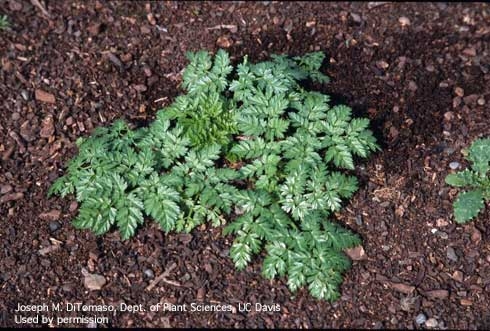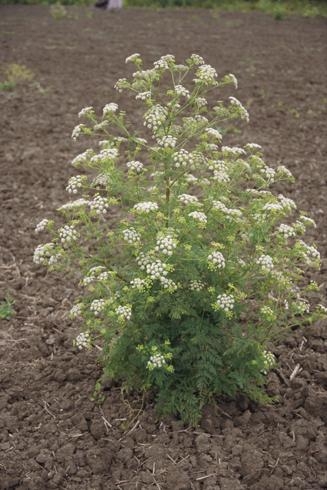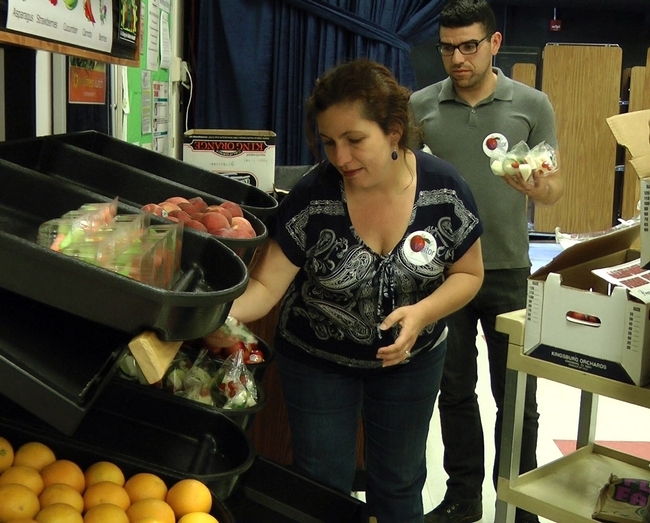From the UC Blogosphere...
Poison Hemlock Widespread in California
-- Mary Louise Flint, Associate Director, Urban and Community IPM and Extension Entomologist
Poison hemlock, Conium maculatum, was brought from Europe into the U.S. as an ornamental in the 1880s and now occurs throughout North America. In California it is most commonly found at lower elevations and coastal regions but it is continuing to spread into other areas.
Although made famous by Shakespeare and other literary giants as a murder weapon, cases of human poisoning are rare in California; however, poison hemlock is a serious concern to the livestock industry. Cattle, goats and horses are most sensitive to the plant’s toxic alkaloids but pigs, sheep, elk, turkeys and wild animals may also be poisoned.
A new Pest Note: Poison Hemlock outlines identification, biology, impact and management for poison hemlock. It also includes a map of the weed’s distribution in California and areas where it is spreading. Poison hemlock is a biannual plant which grows as a low rosette in its first year and, in the second year, develops tall, up to 6 feet high or more, branching stems that bear small white flowers in spring through early summer.
Find the Pest Note: Poison Hemlock at http://www.ipm.ucdavis.edu/PMG/PESTNOTES/pn74162.html. Authors are J.M. DiTomaso, Plant Sciences, UC Davis; J.A. Roncoroni, UCCE Napa; S.V. Swain, UCCE Marin County; and S.D. Wright, UCCE Tulare/Kings County.
Fuller Rose Beetle Meeting Provides Guidelines
A meeting was held in Visalia on June 17 on the subject of protecting citrus fruit against egg-laying by Fuller rose beetle. Fuller rose beetle is extremely difficult to kill- the adults are built like tanks, live forever, and can go weeks without feeding. Foliar applications of Sevin, Actara and Kryocide work the best to kill adults, but no insecticide treatment kills all of them. The larvae are underground so they are difficult to treat. The eggs have a thick outer shell that protects them from insecticides and they are tucked under the button of the fruit. Because foliar insecticides are not very effective, the best line of defense against the pest is preventing it from ever reaching the trees. To accomplish this, a two step approach is the best strategy. First, skirt prune the trees up at least 24" so the branches don't touch the ground. This forces the flightless beetles to climb the trunk to get to the leaves. The next step is to block them from climbing the trunk by applying Brigade WSB in a thick band around the trunk. (See our web site for more details on how to build a spray wand to treat tree trunks http://ucanr.edu/sites/KACCitrusEntomology/Home/Fuller_Rose_Beetle_384/Management_36/) The Brigade repels the beetles and if they cross it, paralyzes them. The best treatment is the 0.5 lb AI/acre rate. The current 2ee allows only one treatment of this rate. CCQC hopes to obtain a 24c special registration, in the near future, that allows two treatments of this rate. The Brigade lasts 12-16 weeks and so a treatment applied in June and one in September will protect the trees from more than 90% of the beetle emergence. Foliar treatments could also be applied to provide a further level of protection. Research is underway to study the efficacy of these methods and to develop a post harvest treatments to replace Methyl Bromide fumigation, which is no longer allowed in Korea.
Long-Horned Bee
We have long-horned cattle and long-horned grasshoppers. How about long-horned bees? It's National Pollinator Week and what...
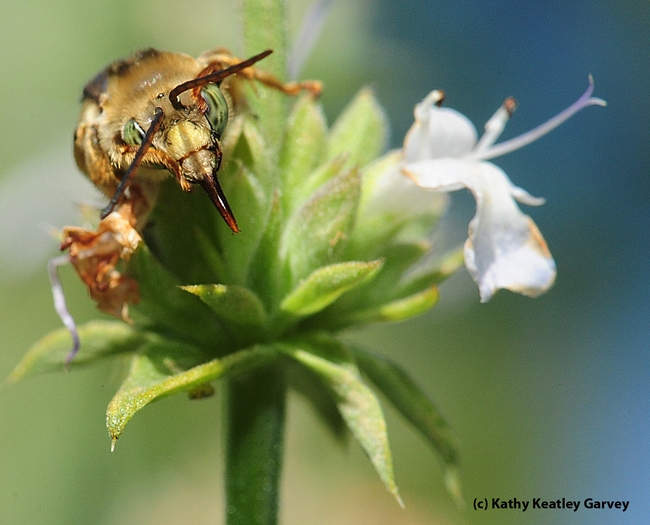
Male long-horned bee, genus Melissodes, probably Melissodes communis, as identified by Robbin Thorp. It is on salvia (sage). (Photo by Kathy Keatley Garvey)
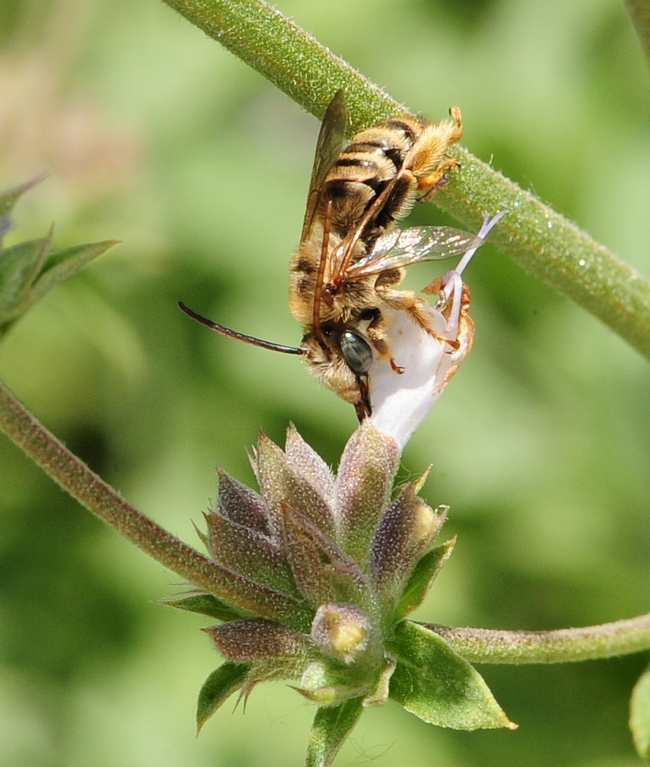
Close-up of long-horned bee, a male Melissodes. (Photo by Kathy Keatley Garvey)
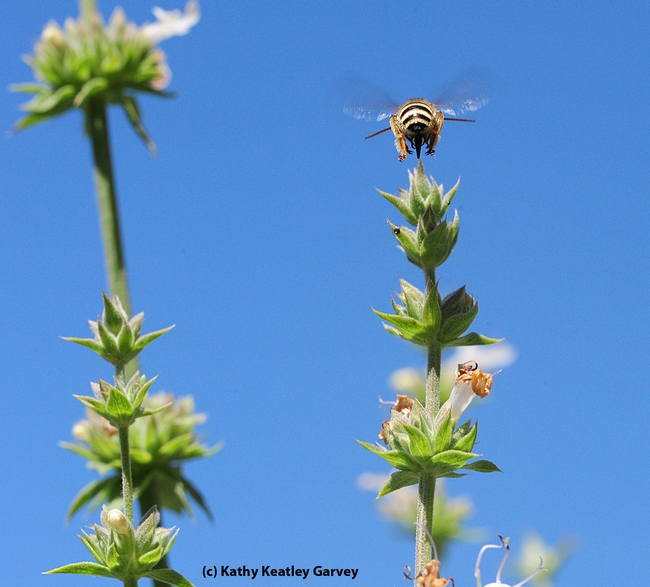
Up, up and away. Male Melissodes, long-horned bee, over salvia. (Photo by Kathy Keatley Garvey)
UCCE advisor says the obesity tide may be turning
Rates of obesity are leveling off and nutrition experts are hoping rates will decline this decade, says Terri Spezzano, UC Cooperative Extension advisor in Stanislaus County. Spezzano was featured in the Modesto Bee's "Monday Q&A" today.
Spezzano shared tips about increasing the amount of fruits and vegetables in the diet and the importance of developing a regular exercise routine.
The mother of two young sons, Spezzano said they sit down together on Sundays with grocery store ads and plan the week's meals.
"We love the summer because it is so much easier to get fresh fruit and vegetables," Spezzano said. "We grow our own vegetables and go to the farmers' market on Saturday and that helps us plan meals also."
The Fresno Bee sought information from UCCE for a front-page story that appeared Monday about food waste. Americans throw away 90 billion pounds of food a year, the newspaper reported.
Ginnie Nash, UCCE nutrition education program manager, suggested buying only what you need. It sounds obvious, writer Bethany Clough acknowledged in the article, but buying too much is one of the biggest sources of food waste.
"We get busy. It's tough," Nash said. Plan meals on paper and see what's in the refrigerator and cupboard before going shopping.
Hop to It!
What's that hopping on our patio? At first we thought it was a grasshopper. Not! It was a katydid, sometimes called a...
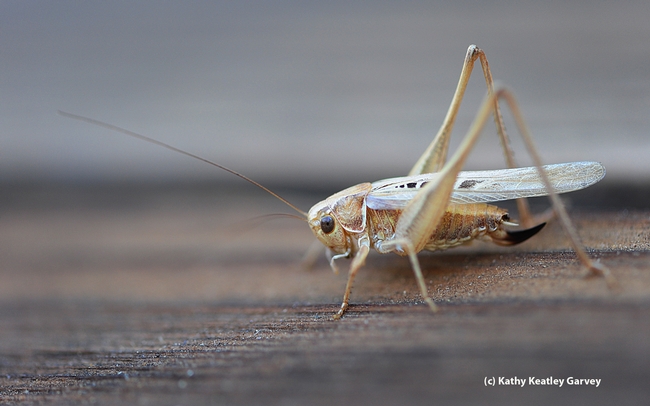
A katydid, or "long-horned grasshopper," from family Tettigonliidae. (Photo by Kathy Keatley Garvey)



